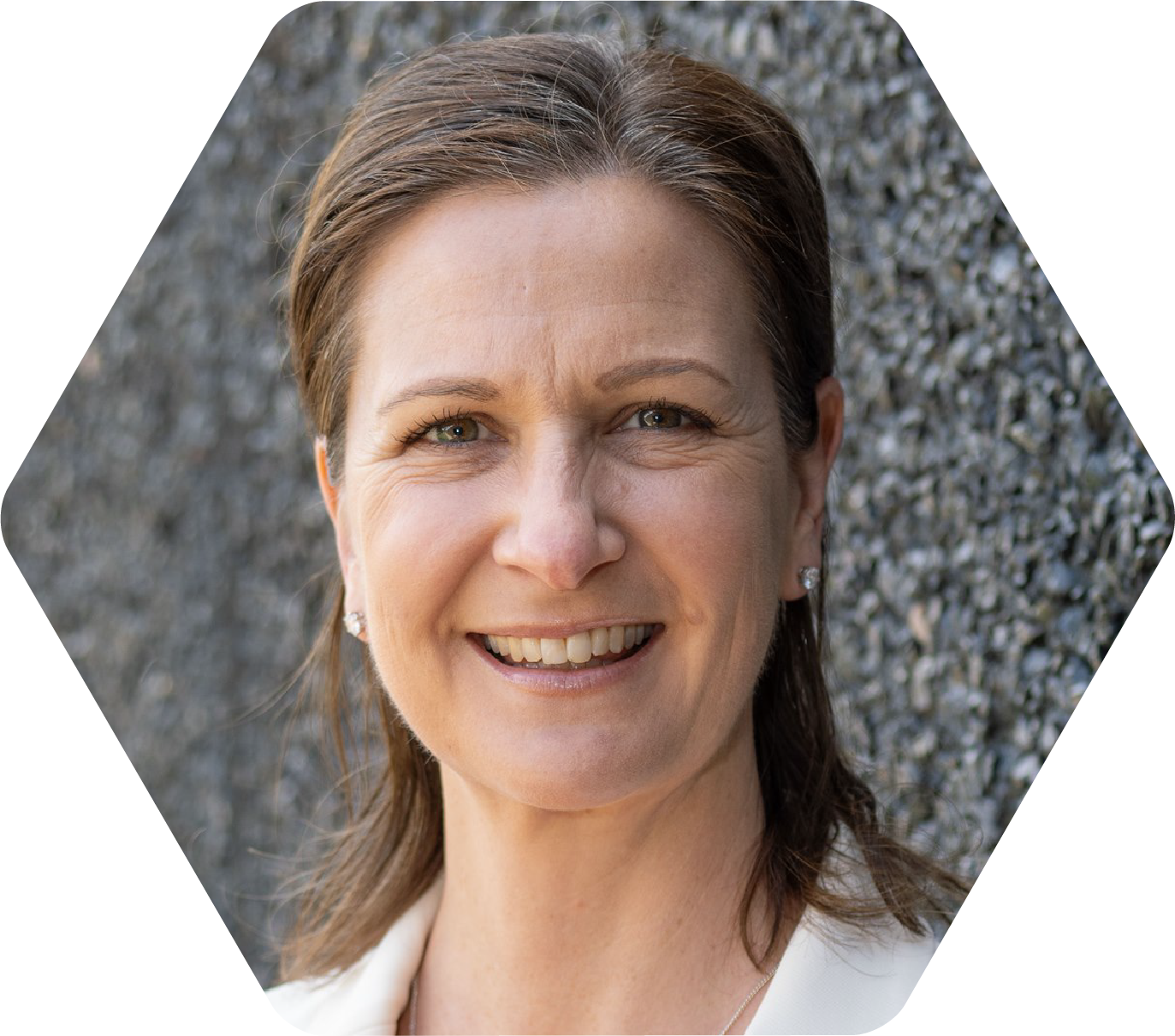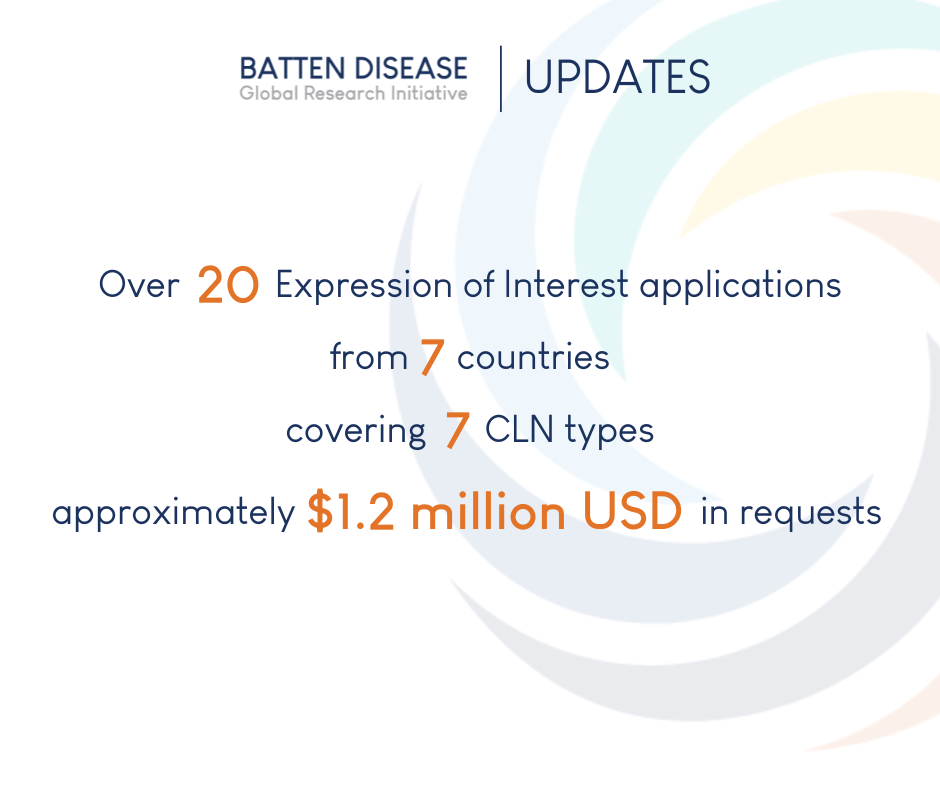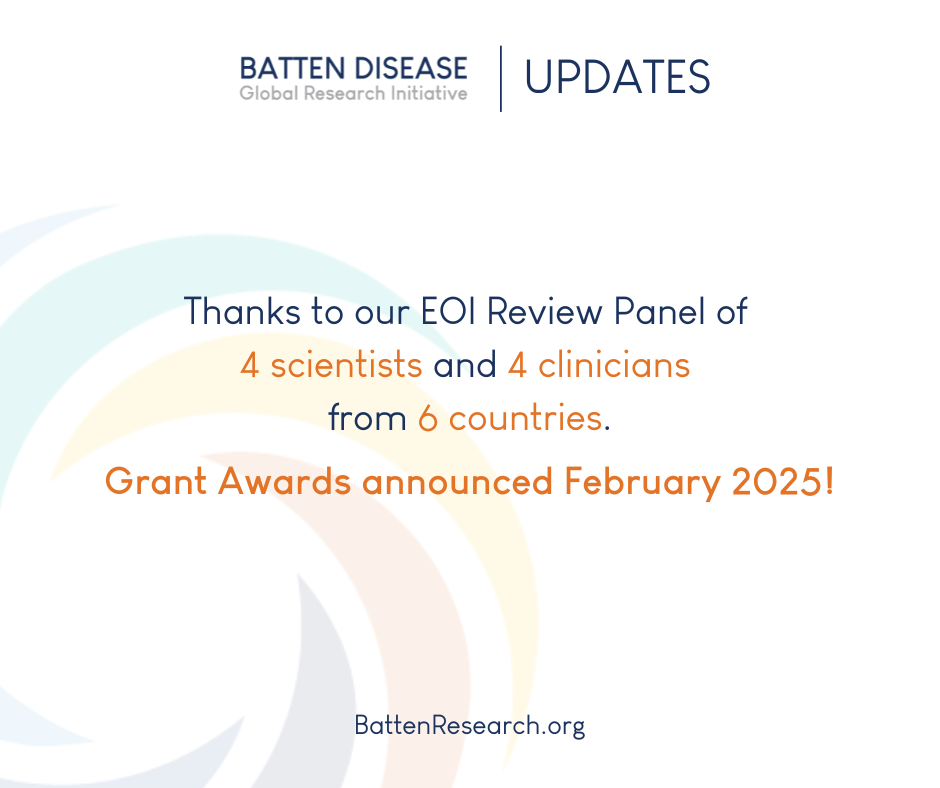It’s time for research updates! BDSRA Foundation’s Head of Research & Medical Affairs Dr. Ineka Whiteman breaks down Batten disease clinical program updates, research news & opportunities, and resources in her monthly column, as seen in BDSRA’s monthly newsletter, The Illuminator.
Batten Disease Global Research Initiative (BDGRI)
The Batten Disease Global Research Initiative opened its inaugural round in July, calling for Expressions of Interest. The number of applications we received surpassed all expectations and we were impressed with the caliber of science and innovation from applicants worldwide. This made the decisions for our Grant Review Panel extremely difficult, and we truly wish we could fund many of these projects.
Some of the topline numbers from these proposals include:
- More than 20 Expressions of Interest from 7 different countries
- Covering 7 CLN subtypes
- With a total of over $1.2 million (USD) in requested funds
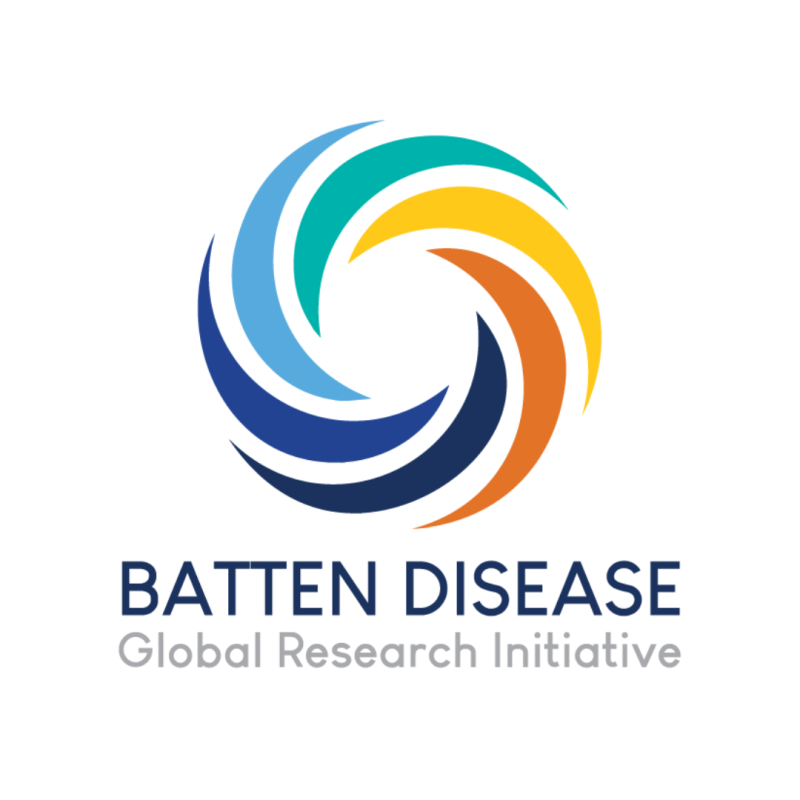
Our Review Panel, composed of 4 scientists and 4 clinicians from 6 countries, has decided on the top applicants, and those researchers have now been invited to submit full research proposals which will be reviewed later this year. Grant Outcomes are expected to be announced in February 2025.
In addition to the core funding provided by BDGRI member organizations, we are still seeking other interested parties who may wish to partner on selected, subtype-specific projects, as our “GRI Funding Partners.” We are grateful to have already received interest from several potential Funding Partners including NCL-Stiftung (Germany), Beyond Batten Disease Foundation, ForeBatten Foundation, and Noah’s Hope/Hope 4 Bridget.
Together, our mission is to foster and collectively invest in the most promising research worldwide that seeks to address key research questions and areas of unmet need in Batten disease.
If you are interested in becoming a GRI Funding Partner, please reach out anytime at research@bdsraaustralia.org.
As always, thank you for your support and dedication to our shared mission.
Warm regards,

CLINICAL PROGRAM UPDATES
Clinical Trial Tracker
Keep up-to-date with the latest clinical trial and natural history study news with our Clinical Studies Chart on BDSRA’s website. Check it out by clicking here.
“N-of-2” study of Zebronkysen (FBF-001) ASO for the treatment of CLN3 disease with unique mutation
On September 25, we shared the news from our friends at the ForeBatten Foundation and Center of Excellence Affiliate UNC-Chapel Hill that the FDA has provided IND clearance for the clinical investigation for Zebronkysen (FBF-001) under the N-of-1 guidance for individualized Antisense Oligonucleotide (ASO) drug products. Two sisters, Amelia and Makenzie Kahn (pictured), who have the unique CLN3 c.569dupG mutation began treatment in June 2024.
Dr. Michelle Hastings, the lead scientist on this initiative, explained, “The ASO was designed specifically for the unique c.569dupG mutation, realized through a cooperative effort of scientists, clinicians, and an experienced drug development team. We are enthusiastic about the trail we are blazing, which unlocks new possibilities for personalized RNA-based treatments. Specifically, this ASO was engineered to correct a particularly rare mutation tied to the disease. Considerable research is being conducted in parallel to refine an ASO approach for the common mutation, with current findings giving hope for an ASO-based therapy soon.”
Dr Yael Shiloh-Malawsky, the principal investigator of the N-of-2 study and Director of the UNC Children’s Neurology Batten Disease Clinic said, “This is an extraordinary example of how incredible talent, investment, and collaboration with multiple scientists can come together to bring new and innovative treatments to pediatric patients in need. It’s incredible.”
The BDSRA Foundation, with the Centers of Excellence consortium, is currently in discussions with the ForeBatten “N-of-2” study team to discuss how we can support the path forward for ASO therapy for the common CLN3 mutation.
Read more about the N-of-2 study here:
- UNC Fast-Tracks Personalized Treatment for Twins with Ultra Rare Genetic Disorder
- ForeBatten Foundation Announces FDA Clearance for Zebronkysen under Individualized ASO Product Guidance
To learn more about ASOs, check out this 2-minute clip from Harvard Medical School:
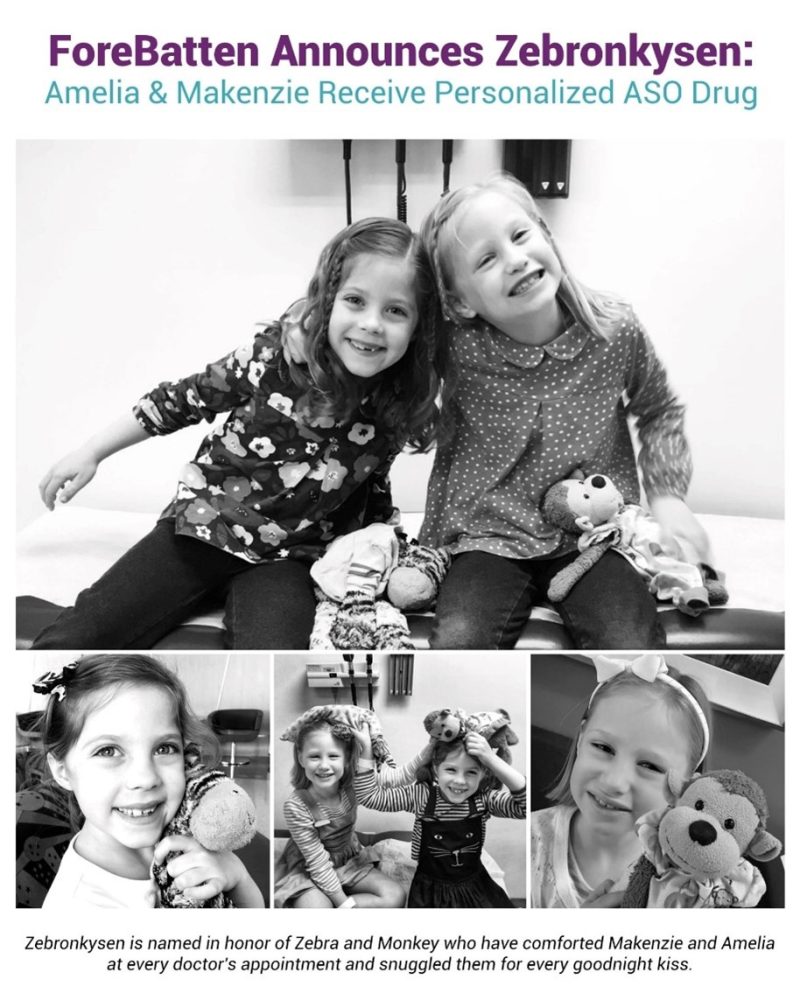
Photo credit: ForeBatten Foundation
PUBLICATION FEATURE
Deciphering the complexity of Batten disease genes
Professor Sara Mole is indeed a well-known and admired figure in the Batten disease community, having led much of the foundational and continuing research into the structure and function of Batten disease genes since the early 1990s. I recently caught up with Prof. Mole to learn more about her current research.
Most recently, her research group at University College London (UCL) has been pioneering “long-read RNA sequencing” for Batten disease genes. This is where they read the complete sequence of a single long RNA template used by the cell machinery to guide the production of a protein, instead of carrying out lots of short reads and overlapping them together like a linear jigsaw to get the full-length RNA.
For many genes, there is only one or very few templates produced that guide the production of the protein. (To see a short 3D animation of how DNA and RNA guide protein production, click here).
Some genes, particularly those important for brain function, can produce more than a hundred slightly different RNA templates and in turn, these guide the production of many different versions of the protein that differ slightly from each other. These versions can be missing the beginning or the end, or a chunk in the middle, or just consist of a small portion of the expected protein. We don’t fully understand why this happens, but assume there is good biological reason – we just don’t yet know what that is!
Ph.D. student Haoyu Zhang and Dr. Chris Minnis in Prof. Mole’s team have started looking at the RNA templates produced from Batten disease genes, and what happens to these during the disease. In this first paper, CLN3 transcript complexity revealed by long-read RNA sequencing analysis published on October 4, they extracted the data available on CLN3 templates in a number of scientific databases. None of the samples have Batten disease. They found more than a hundred different CLN3 templates. Together these guide the production of 48 different CLN3 proteins, 26 of which had not been described before. One of their most interesting findings is that even healthy people produce a small amount of the CLN3 RNA template that is like the one most commonly found associated with CLN3 disease caused by the 1-kb deletion.

Pictured from left to right: Sara, Chris, Emily who curates the database, Haoyu, Jose who works on yeast disease models, and Hasna who is developing CLN3 gene therapy.
“This new work is showing us how complex the gene CLN3 and its templates are. This was unexpected and is making us think differently about CLN3,” Mole said.
“We are now looking at what happens in those with CLN3 disease. We might find unexpected disease templates that guide the production of proteins that are toxic to cells and that opens the exciting possibility for therapeutics, whereby reducing these particular templates specifically might have a disease-modifying effect. Or the opposite – perhaps there are rare templates that produce a variant CLN3 protein with more function and we could design a therapy to increase the proportion of these. Ultimately, the goal is to carry out these investigations across all the Batten disease genes”.
You can read the original Open Access article here.
PUBLICATION HIGHLIGHTS – October 2024
TRPML1 activation ameliorates lysosomal phenotypes in CLN3 deficient retinal pigment epithelial cells.
Wünkhaus D, et al.
Sci Rep. 2024 Jul 29;14(1):17469. doi: 10.1038/s41598-024-67479-8. PMID: 39080379
Ceroid lipofuscinosis type 2 disease: Effective presymptomatic therapy-Oldest case of a presymptomatic enzyme therapy.
Breuillard D, et al.
Eur J Neurol. 2024 Sep;31(9):e16324. doi: 10.1111/ene.16324. Epub 2024 May 1. PMID: 38693756
Early Symptoms and Treatment Outcomes in Neuronal Ceroid Lipofuscinosis Type 2: Croatian Experience.
Radić Nišević J, et al.
J Pers Med. 2024 Jul 24;14(8):783. doi: 10.3390/jpm14080783. PMID: 39201975
Behaviours and psychological symptoms of childhood dementia: two cases of psychosocial interventions.
Atee M, Whiteman I, Lloyd R, Morris T.
Palliat Care Soc Pract. 2024 Sep 6;18:26323524241273492. doi: 10.1177/26323524241273492. eCollection 2024.
PMID: 39247715
Pediatric onset neuronal ceroid lipofuscinoses: Unraveling clinical and genetic specifications.
Ahdi SG, Alvi JR, Ashfaq A, Sultan T.
Pak J Med Sci. 2024 Sep;40(8):1638-1643. doi: 10.12669/pjms.40.8.8006.
PMID: 39281238
Six induced pluripotent stem cell lines from fibroblasts of individuals with CLN3-related conditions.
Dwojak E, et al.
Stem Cell Res. 2024 Sep 18;81:103563. doi: 10.1016/j.scr.2024.103563. Online ahead of print. PMID: 39317061
Joining forces to develop individualized antisense oligonucleotides for patients with brain or eye diseases: the example of the Dutch Center for RNA Therapeutics.
Aartsma-Rus A,et al.
Ther Adv Rare Dis. 2024 Sep 23;5:26330040241273465. doi: 10.1177/26330040241273465. eCollection 2024 Jan-Dec. PMID: 39328974 Free PMC article. Review.
A novel pathogenic variant in the KCTD7 gene in a patient with neuronal ceroid lipofuscinosis (CLN14): a case report and review of the literature.
Zeineddin S, et al.
BMC Neurol. 2024 Sep 30;24(1):367. doi: 10.1186/s12883-024-03868-w. PMID: 39350080. Review.
Glucose metabolism impairment as a hallmark of progressive myoclonus epilepsies: a focus on neuronal ceroid lipofuscinoses.
Santucci L, et al.
Front Cell Neurosci. 2024 Sep 19;18:1445003. doi: 0.3389/fncel.2024.1445003. eCollection 2024. PMID: 39364042
CLN3 transcript complexity revealed by long-read RNA sequencing analysis.
Zhang HY, et al.
BMC Med Genomics. 2024 Oct 4;17(1):244. doi: 10.1186/s12920-024-02017-z.
PMID: 39367445
Insight of autonomic dysfunction in CLN3 disease: a study on episodes resembling paroxysmal sympathetic hyperactivity (PSH).
Baekmann C, et al.
Orphanet J Rare Dis. 2024 Oct 10;19(1):374. doi: 10.1186/s13023-024-03336-1. PMID: 39390491
Loss of CLN3 in microglia leads to impaired lipid metabolism and myelin turnover.
Yasa S, et al.
Commun Biol. 2024 Oct 22;7(1):1373. doi: 10.1038/s42003-024-07057-w.
PMID: 39438652
Safety and feasibility of umbilical cord blood transplantation in children with neuronal ceroid lipofuscinosis: a retrospective study.
Bauchat A, et al.
Stem Cells Transl Med. 2024 Oct 29:szae080. doi: 10.1093/stcltm/szae080. Online ahead of print. PMID: 39471475
Adult-onset neuronal ceroid lipofuscinosis misdiagnosed as autoimmune encephalitis and normal-pressure hydrocephalus: A 10-year case report and case-based review.
Huang H, et al.
Medicine (Baltimore). 2024 Oct 25;103(43):e40248. doi: 10.1097/MD.0000000000040248.
PMID: 39470529 Free PMC article. Review.


